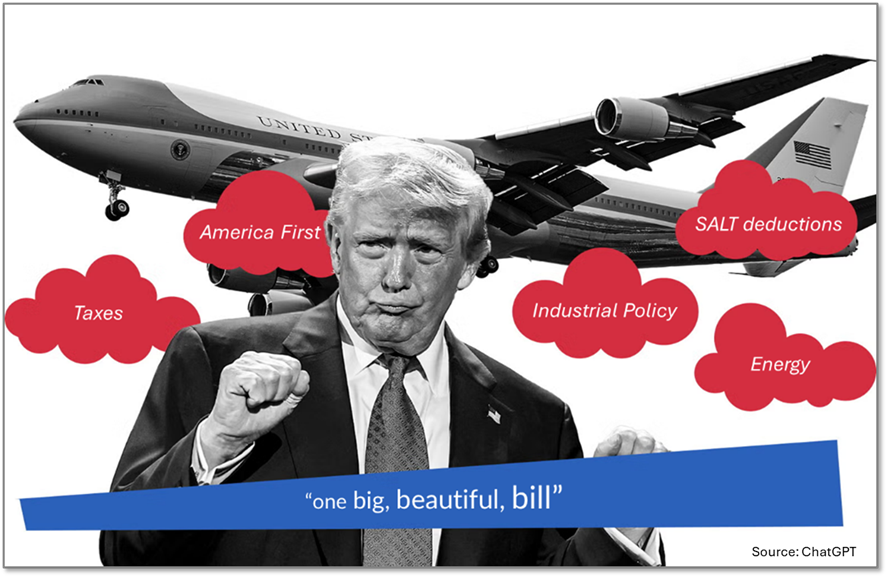Throughout 2025, President Trump’s trade policy agenda has dominated headlines and sparked significant economic concern and market volatility. We’ve shared some of those concerns, but we’ve also argued that Trump’s fiscal policy should be evaluated in its entirety—not judged by one Truth Social post at a time. Beyond the tariff battles, we’ve been encouraged by the wave of onshoring commitments from both corporations and foreign governments. To date, we count over $8 trillion in commitments. On his recent trip to the Middle East, Trump secured another $2 trillion from Saudi Arabia, Qatar and UAE across AI, manufacturing and arms initiatives. One does not need to be a MAGA partisan to realize the economic significance in these pledges.
Next on the fiscal policy agenda is the President’s “Big Beautiful Bill”. Our long-time economic consultant Victor Canto details the bill and its potential impacts on the broader economy below.
Trump’s economic approach blends free-market principles with strategic intervention—particularly in industrial and tax policy. This hybrid strategy has drawn mixed reactions, often divided along ideological lines. The administration’s rapid pace has created uncertainty and volatility, but advocates believe that once the dust settles, the full economic impact of these policies will become clear. Much will depend on whether the market-driven or interventionist components ultimately prevail.
The bill introduced by Trump’s congressional allies seeks to fulfill core campaign promises by maintaining existing tax rates while incentivizing work, investment, and savings. Key reforms include:
- Making lower tax brackets permanent
- Expanding deductions for small businesses
- Reintroducing workfare principles by tying social benefits to employment
- Scaling back elements of the Green New Deal
- Extending favorable depreciation rules for businesses
These measures are generally viewed as pro-growth and consistent with conservative fiscal ideals.
However, the bill is not without its flaws. Provisions such as tax exemptions for tips and interest deductions for U.S.-made car loans reflect a populist tilt that could distort economic efficiency. These targeted breaks may benefit special interest groups, erode the tax base, and increase pressure for higher rates elsewhere. Other elements—like the temporary $4,000 Social Security deduction and expanded SALT deductions—further complicate the tax code and undercut long-term fiscal clarity.
Still, despite these warts, the bill’s core strengths are notable. Proponents argue that its overall merit outweighs its imperfections.
In summary: The flaws in the “Big Beautiful Bill” may dull its shine, but they don’t negate its beauty. When evaluating this legislation, we shouldn’t let the perfect become the enemy of the good.
IMPORTANT DISCLOSURES
The views and opinions expressed are for informational and educational purposes only as of the date of production/writing and may change without notice at any time based on numerous factors, such as market or other conditions, legal and regulatory developments, additional risks and uncertainties, and may not come to pass. This material may contain “forward-looking” information that is not purely historical in nature. Such information may include, among other things, projections, forecasts, estimates of market returns, and proposed or expected portfolio composition. Any changes to assumptions that may have been made in preparing this material could have a material impact on the information presented herein by way of example. Past performance is no guarantee of future results. Investing involves risk; principal loss is possible.
All information has been obtained from sources believed to be reliable, but its accuracy is not guaranteed.
Investment advice is offered through Fortis Capital Advisors, LLC, 7301 Mission Road, Suite 623, Prairie Village, KS 66208



Recent Comments